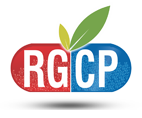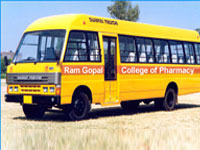Top B. Pharma College / LEET college in Gurgaon/ Ram Gopal college of Pharmacy, Gurgaon /Best Infrastructure
Why it is done?
The office of the
United States Trade
Representative (USTR) recently highlighted that India has a growing problem
of counterfeit medicines, in its annual
‘Special 301 Report’ on intellectual
property protection and review of ‘notorious markets’ for piracy and
counterfeiting released in April. According
to the USTR report, almost 20% ($4.3 billion in 2013-14) of all pharmaceutical
goods sold in the Indian market are counterfeit. Pharmaceutical Sector in India is one of the
leading global producers of low-cost generic medicines due to its high domestic
demand and inexpensive manufacturing costs. The country’s pharmaceutical market
is the world’s third largest in terms of volume, but the thirteenth largest in
value. While counterfeiting is a global
issue, it is much more prevalent in low and middle-income countries with an
estimated 10 to 30% of medicines in these countries being counterfeit, compared
to just 1% of medicines in high-income countries.
Reasons for counterfeit medicines
market in India
limited access to medical care, especially in rural
areas fragmented supply chain lack of consumer awareness prevalent practice of
self-medication high cost of genuine medicines 2/3
weak enforcement
of legislation and corruption prevalence of online pharmacies technology
advancements in counterfeiting
Ram Gopal college of Pharmacy, Gurgaon, Best
pharmacy college in Gurgaon.
Classification
of Spurious and Substandard drugs in India
As per Drug and Cosmetic (D and C)
Act, 1940, poor quality drug comprises of misbranded, spurious and adulterated
drugs, respectively. Central Drugs Standard Control Organisation (CDSCO) under
Directorate General of Health Services, Ministry of Health & Family Welfare
has categorised not of standard quality (NSQ) products in three categories A, B
and C that is helpful in categorising the products during quality evaluation.
Best
pharmacy college near Delhi, Ram Gopal College of Pharmacy
|
Category A
|
Category B
|
Category C
|
|
It
incorporates
spurious and adulterated drug products; which conceal the
real identity of the product or formulation and be similar to some well-known
brand. These products may or may not contain active ingredients and generally
manufactured by unlicensed antisocial people or sometimes by licensed
manufacturers.
|
It includes
grossly
substandard drugs in which product fails the disintegration or
dissolution test and where active ingredient assay get below 70% and 5% of
permitted limit.
|
It involves
products
with minor defects like emulsion cracking, change in formulation colour,
small variation in net content, and sedimentation in clear liquid
preparation, failing of weight variation test, spot or discolouration on
product, uneven coating, and presence of foreign matter and labelling errors.
|
How
barcode will change it?
B
arcoding
for domestic sales of drugs
will ascertain the authenticity of medicines, ability
to monitor their ready availability, expiration, track and trace their recalls
when needed.
Raising public awareness: approximately 78% of India 650 million mobile phone users have access to the internet, and online education about counterfeit and spurious medicine may be an effective way to tackle the issue quickly and efficiently. Implementing innovative anti-counterfeiting measures: New generation anti-counterfeiting technologies, such as the use of forensic markers (chemical, biological and DNA taggants), cloud-based supply chain data repositories, and blockchain technology in supply chains can be used to fight the menace of counterfeit drugs.
PRARTHNA LAKHERA
College Address
College At:- Near Sultanpur Bird Sanctuary,
Farrukhnagar, Distt.- Gurgaon, Haryana
Phone:- 9818511778
Email:- rgcpcollege@gmail.com
Head Office
A1/11, Prashant Vihar Rohini,
Near Pitampura Metro Station,Opposite Power House
New Delhi, India-110085



